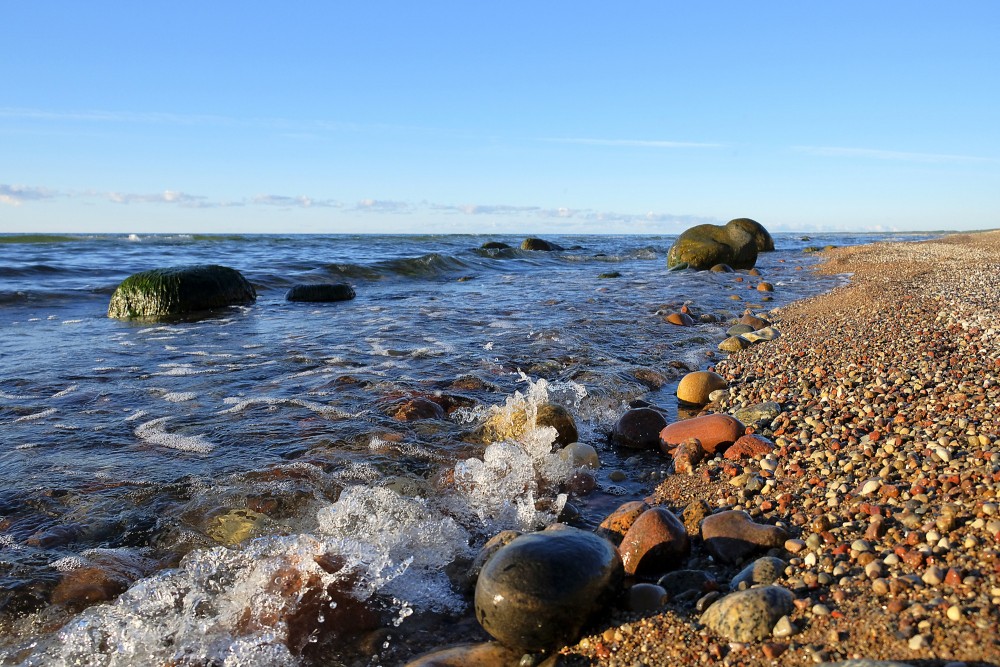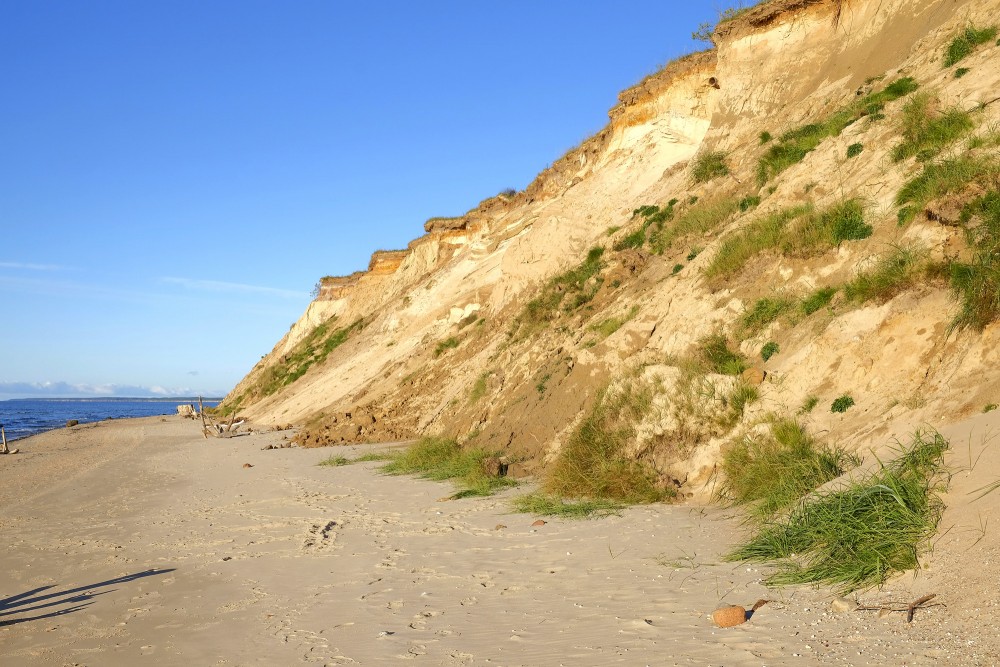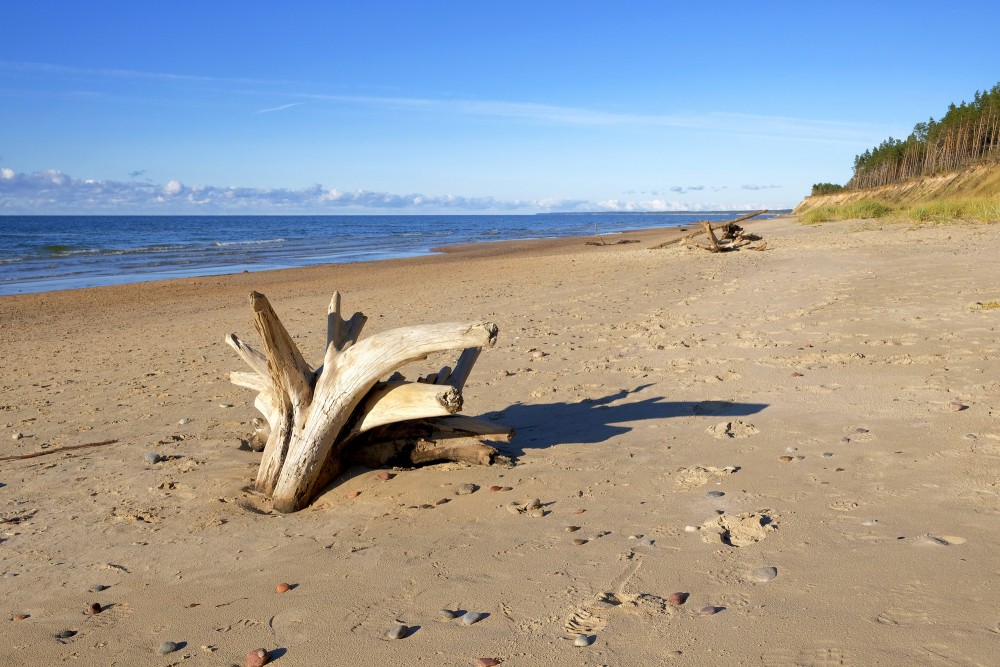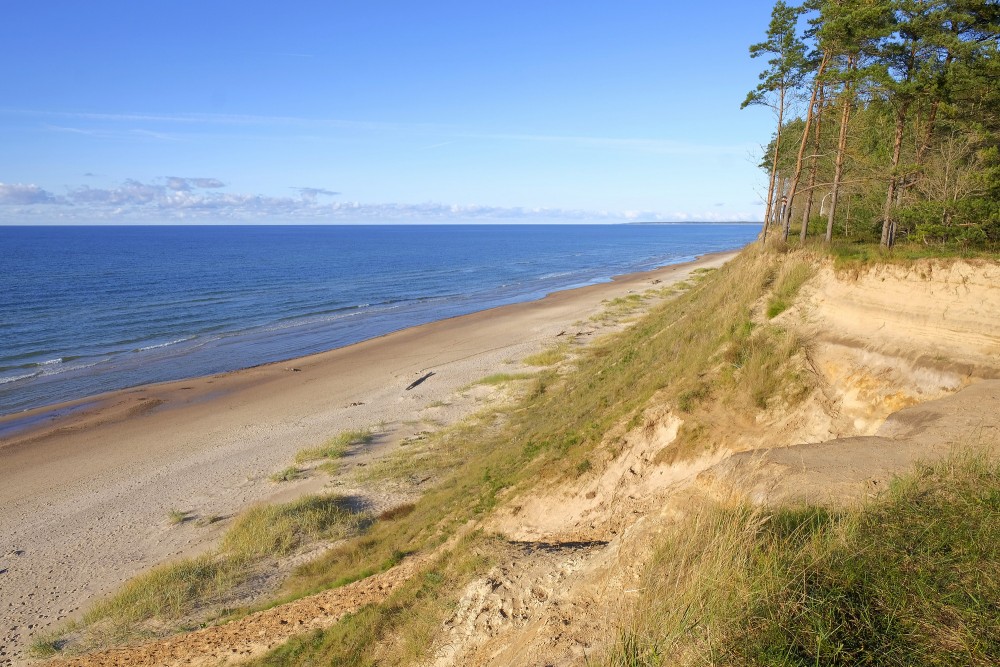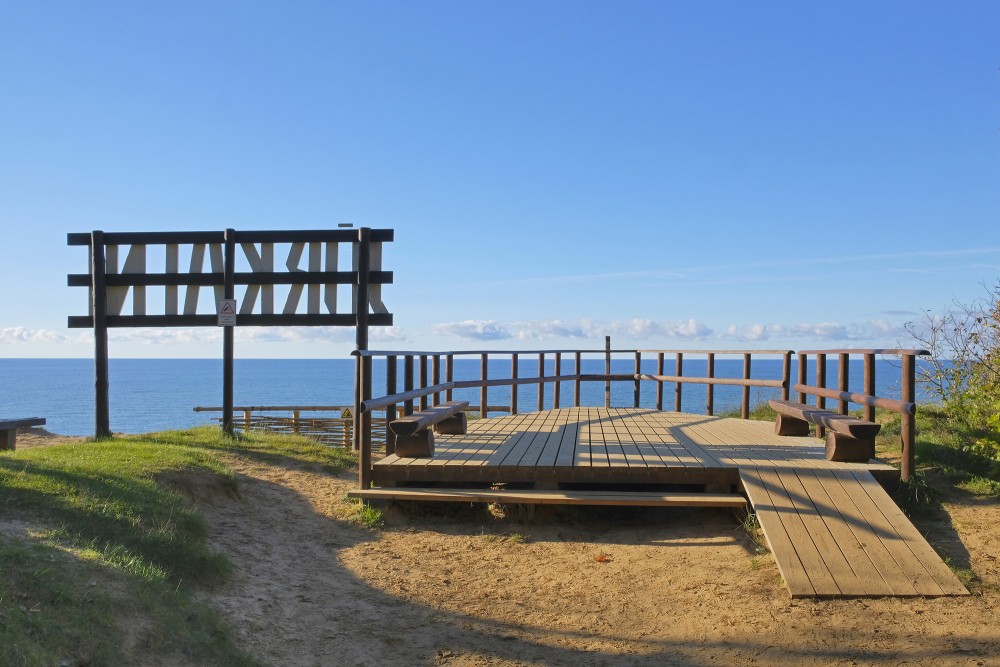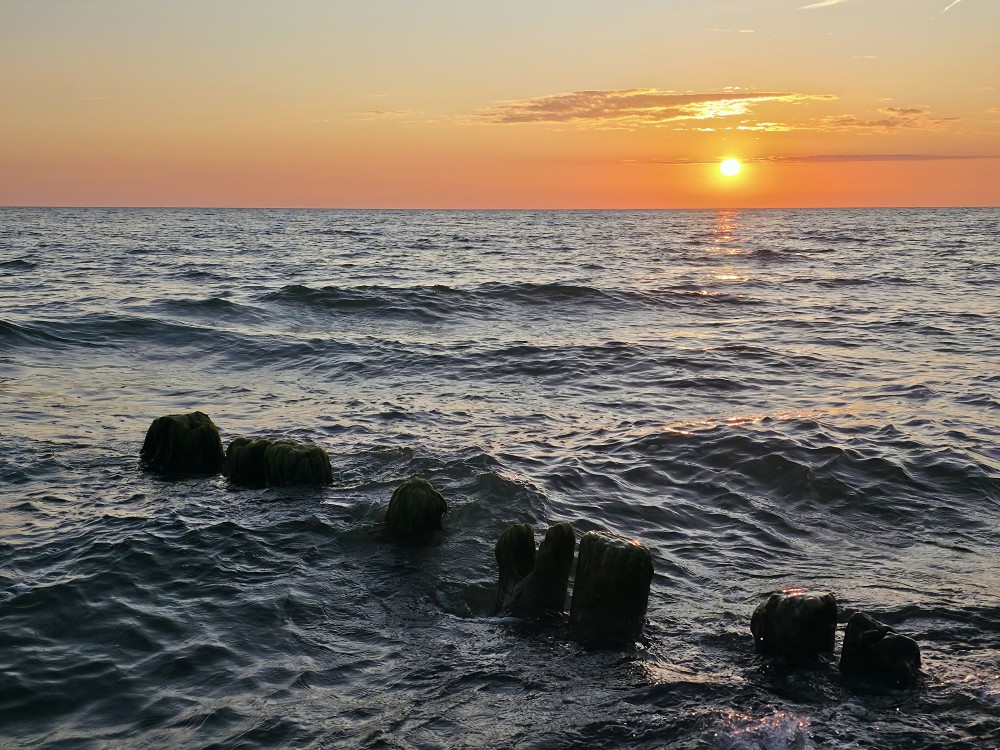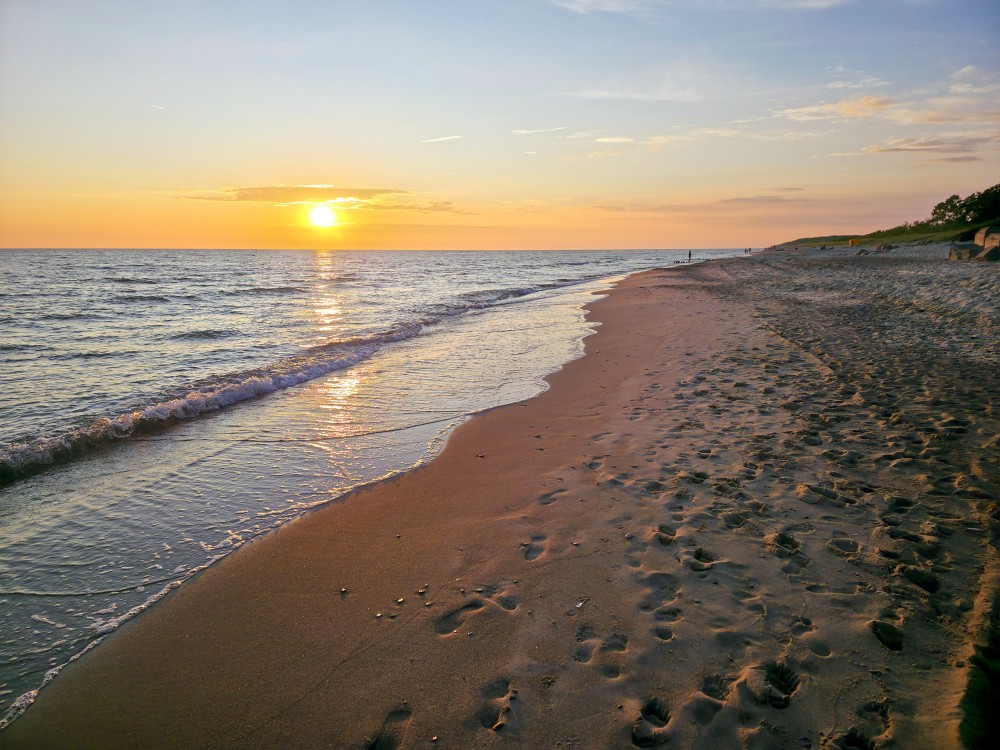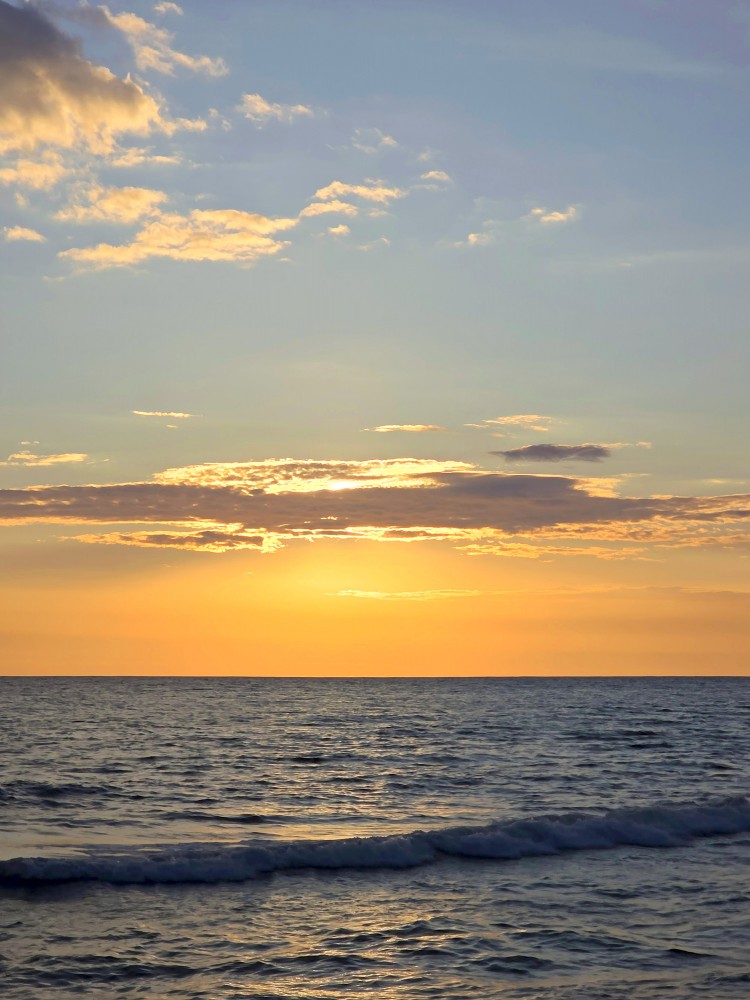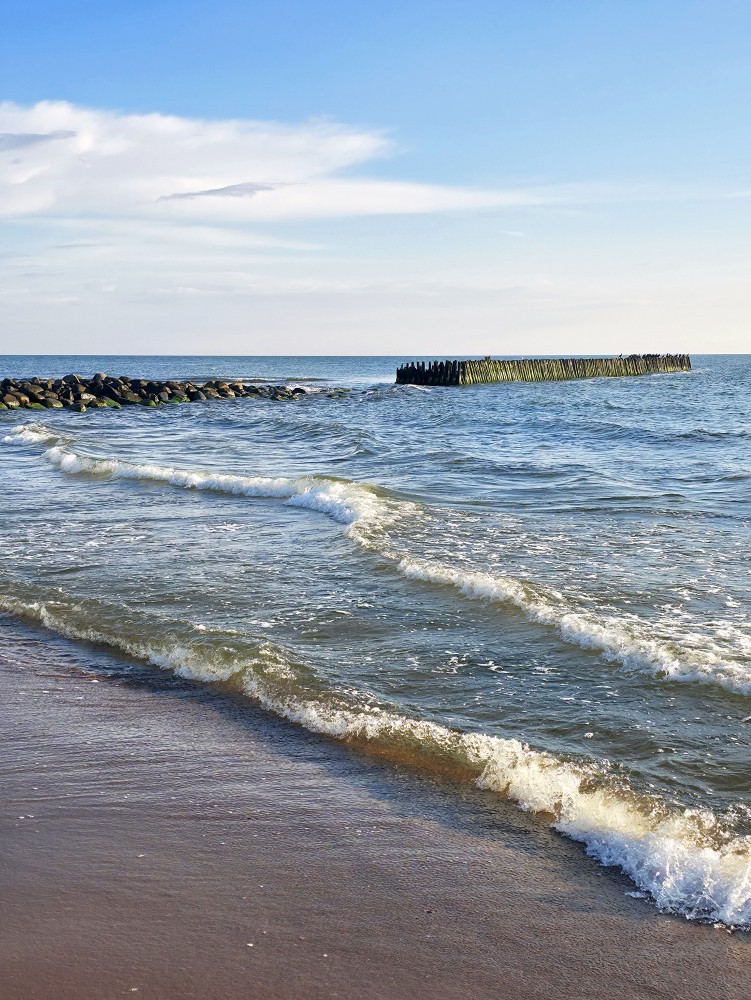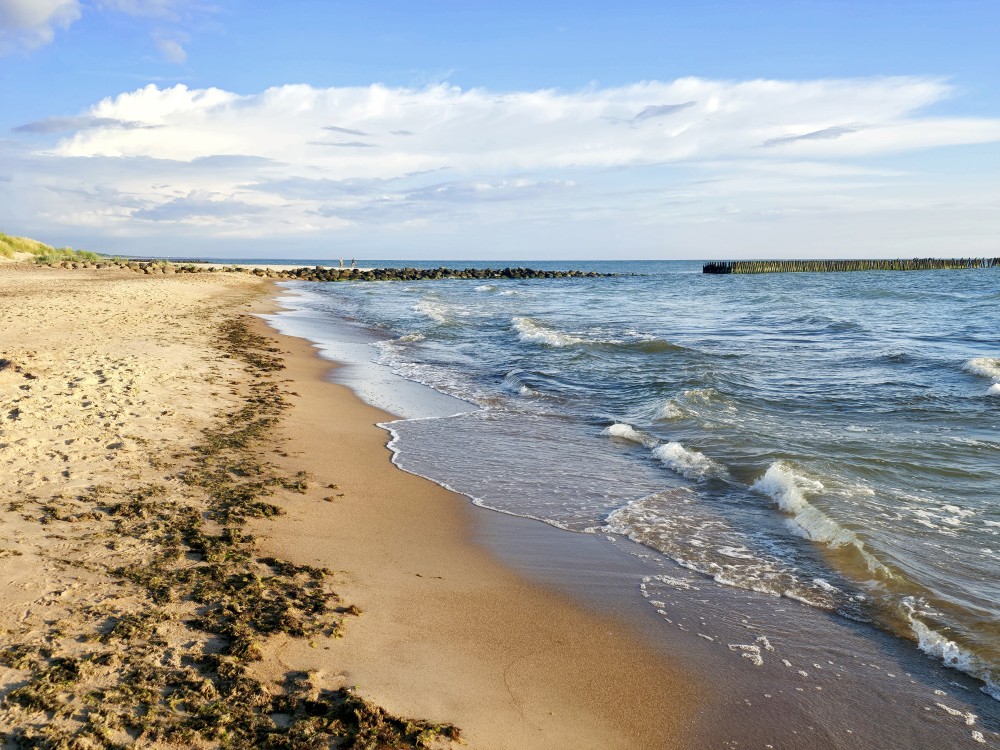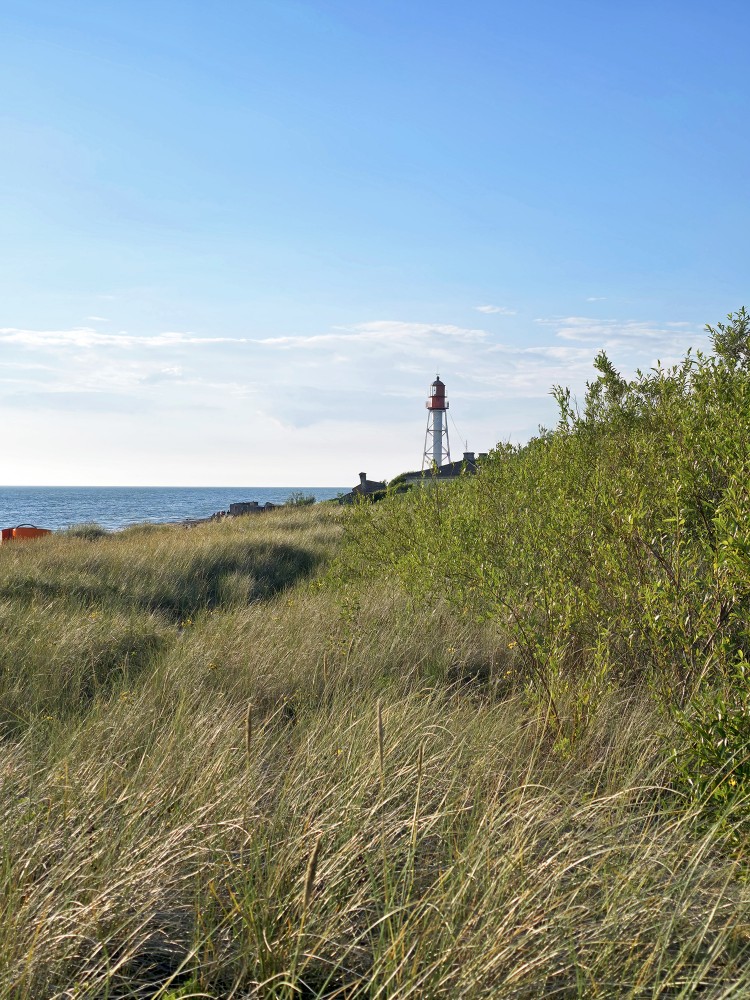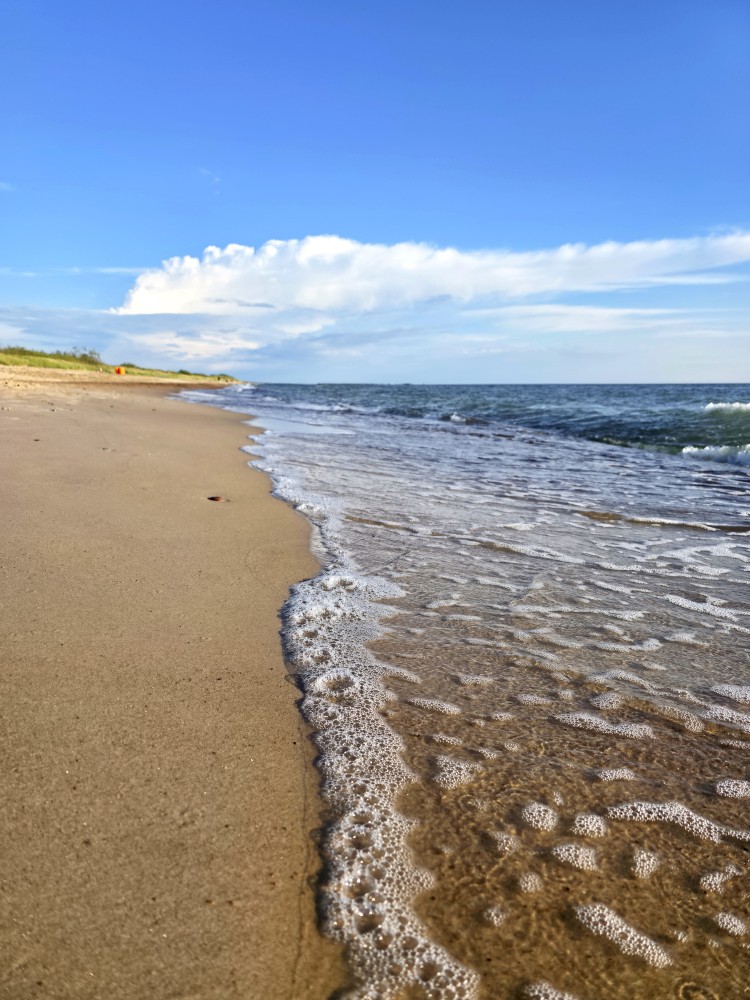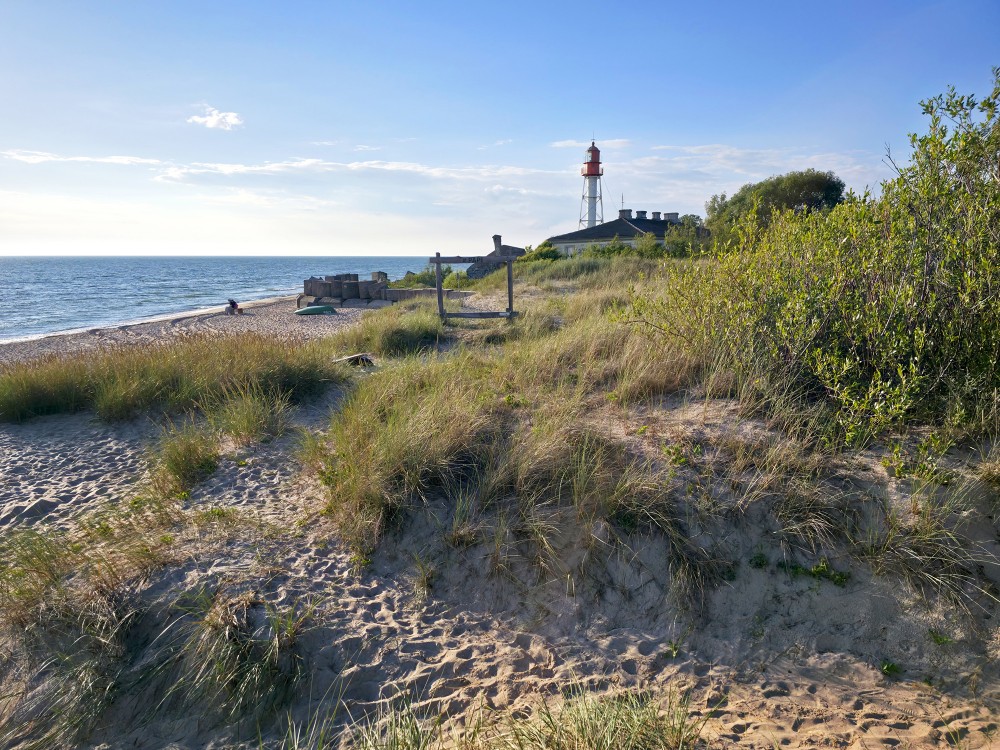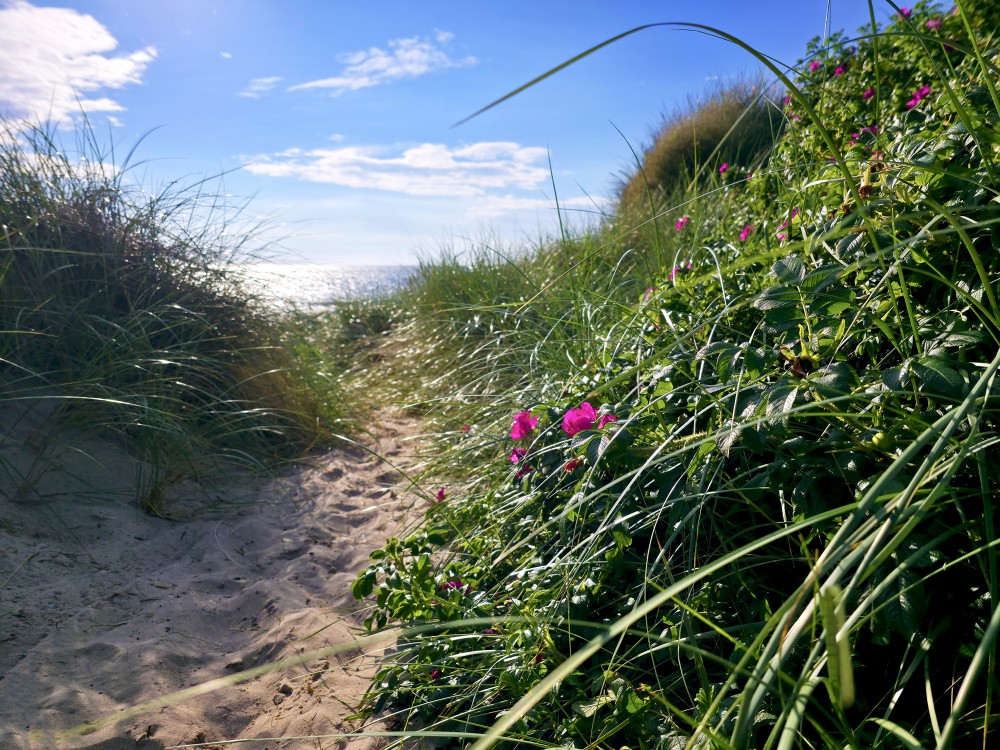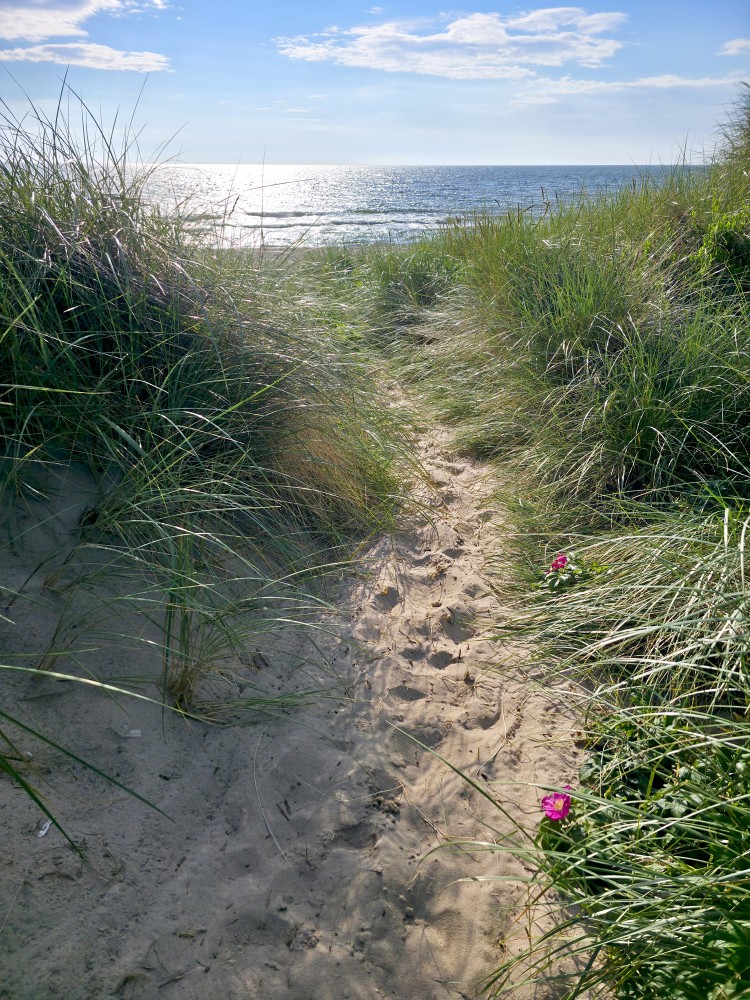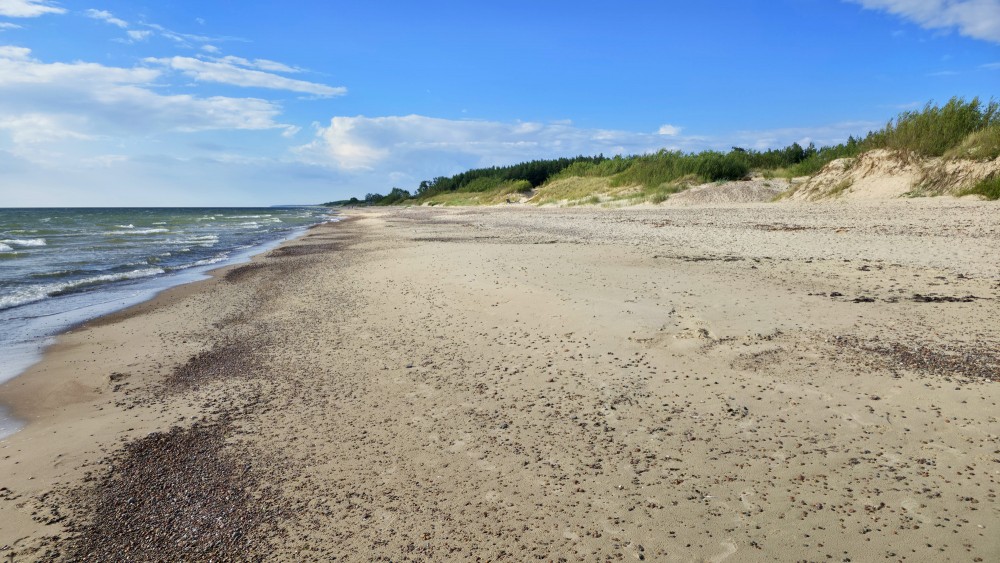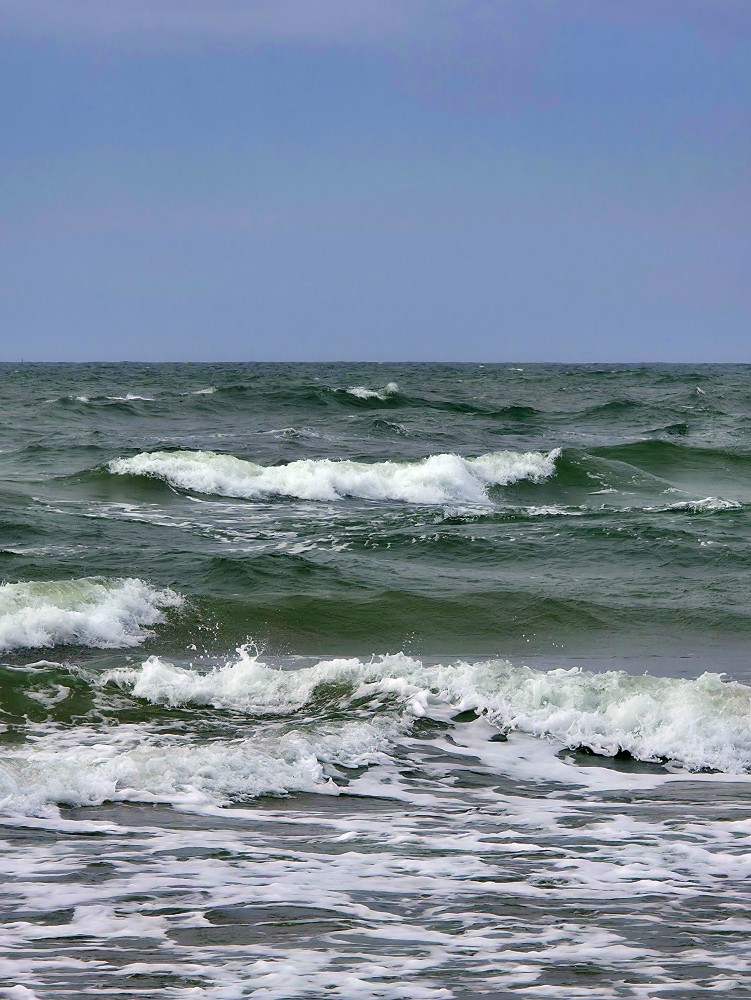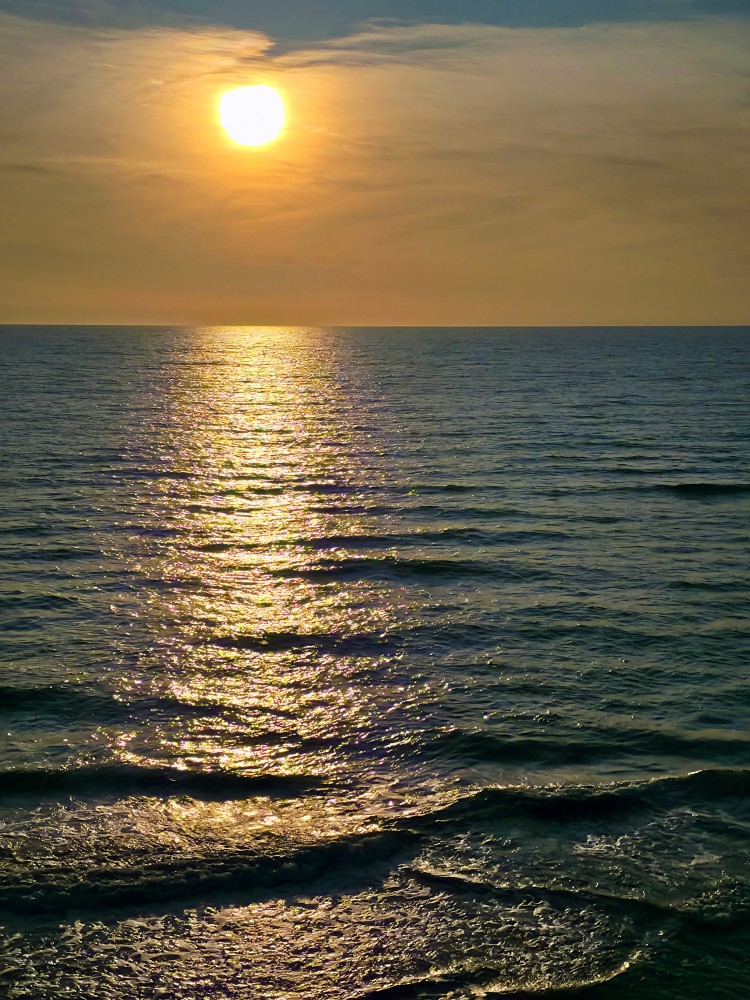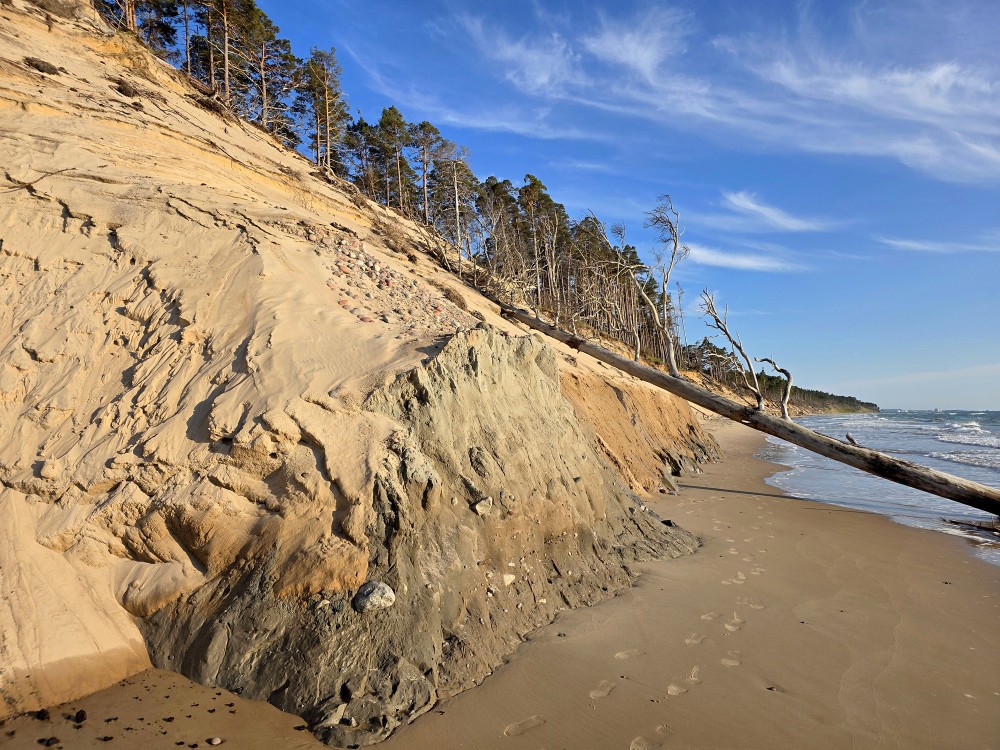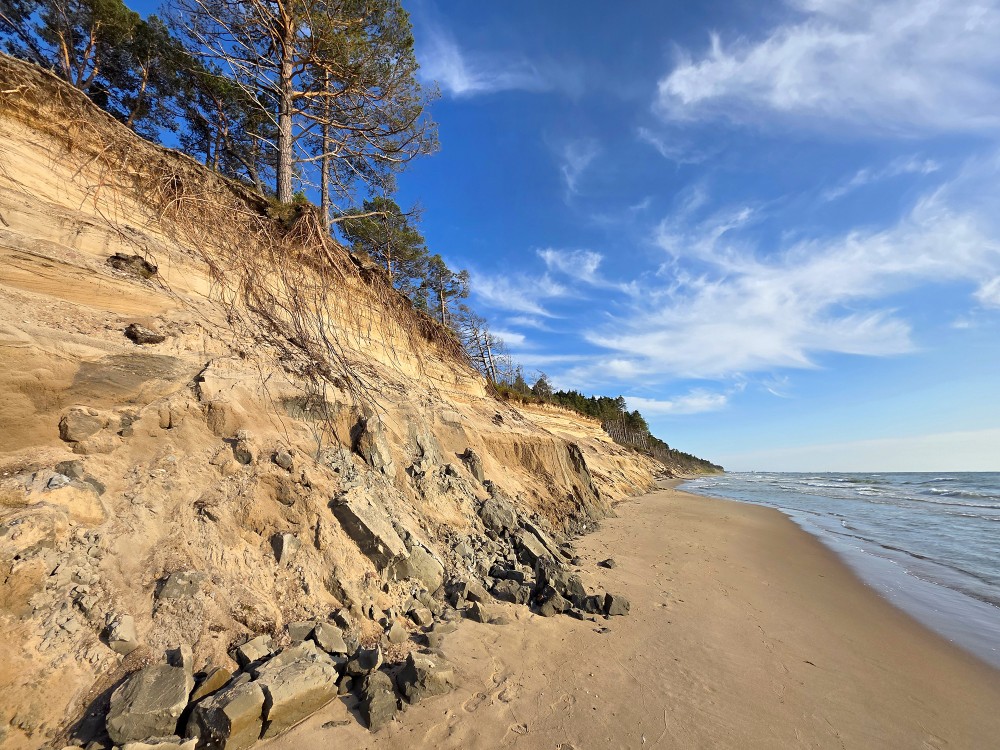Baltic Sea
The Baltic Sea is a sea of the Atlantic Ocean, enclosed by Scandinavia, Finland, Estonia, Latvia, Lithuania, Russia, Poland, Germany and the North and Central European Plain.
The sea stretches from 53°N to 66°N latitude and from 10°E to 30°E longitude. A mediterranean sea of the Atlantic, with limited water exchange between the two bodies, the Baltic Sea drains through the Danish islands into the Kattegat by way of the straits of Øresund, the Great Belt, and the Little Belt. It includes the Gulf of Bothnia, the Bay of Bothnia, the Gulf of Finland, the Gulf of Riga, and the Bay of Gdańsk.
The Baltic Proper is bordered on its northern edge, at the latitude 60°N, by the Åland islands and the Gulf of Bothnia, on its northeastern edge by the Gulf of Finland, on its eastern edge by the Gulf of Riga, and in the west by the Swedish part of the southern Scandinavian Peninsula.
The Baltic Sea is connected by artificial waterways to the White Sea via the White Sea Canal and to the German Bight of the North Sea via the Kiel Canal.
| Baltic Sea | |
| Location | Europe |
| Type | Sea |
| Primary inflows | Daugava, Kemijoki, Neman (Nemunas), Neva, Oder, Vistula, Lule, Narva, Torne |
| Primary outflows | The Danish Straits |
| Catchment area | 1,641,650 km2 (633,840 sq mi) |
| Basin countries | Coastal: Denmark, Estonia, Finland, Germany, Latvia, Lithuania, Poland, Russia, Sweden Non-coastal: Belarus, Czech Republic, Norway, Slovakia, Ukraine |
| Max. length | 1,601 km (995 mi) |
| Max. width | 193 km (120 mi) |
| Surface area | 377,000 km2 (146,000 sq mi) |
| Average depth | 55 m (180 ft) |
| Max. depth | 459 m (1,506 ft) |
| Water volume | 21,700 km3 (1.76×1010 acre⋅ft) |
| Residence time | 25 years |
| Shore length | 8,000 km (5,000 mi) |
Definitions
Administration
The Helsinki Convention on the Protection of the Marine Environment of the Baltic Sea Area includes the Baltic Sea and the Kattegat, without calling Kattegat a part of the Baltic Sea, "For the purposes of this Convention the 'Baltic Sea Area' shall be the Baltic Sea and the Entrance to the Baltic Sea, bounded by the parallel of the Skaw in the Skagerrak at 57°44.43'N."
Traffic history
Historically, the Kingdom of Denmark collected Sound Dues from ships at the border between the ocean and the land-locked Baltic Sea. They were collected in the Øresund at Kronborg castle near Helsingør, in the Great Belt at Nyborg. In the Little Belt, the site of intake was moved to Fredericia, after that stronghold had been built. The narrowest part of Little Belt is the "Middelfart Sund" near Middelfart.
Oceanography
Geographers widely agree that the preferred physical border of the Baltic is a line drawn through the southern Danish islands, Drogden-Sill and Langeland. The Drogden Sill is situated north of Køge Bugt and connects Dragør in the south of Copenhagen to Malmö; it is used by the Øresund Bridge, including the Drogden Tunnel. By this definition, the Danish Straits are part of the entrance, but the Bay of Mecklenburg and the Bay of Kiel are parts of the Baltic Sea. Another usual border is the line between Falsterbo, Sweden and Stevns Klint, Denmark, as this is the southern border of Øresund. It's also the border between the shallow southern Øresund (with a typical depth of 5–10 meters only) and notably deeper water.
Hydrography and biology
Drogden Sill (depth of 7 m (23 ft)) sets a limit to Øresund and Darss Sill (depth of 18 m (59 ft)), and a limit to the Belt Sea. The shallow sills are obstacles to the flow of heavy salt water from the Kattegat into the basins around Bornholm and Gotland.
The Kattegat and the southwestern Baltic Sea are well oxygenated and have a rich biology. The remainder of the Sea is brackish, poor in oxygen and in species. Thus, statistically, the more of the entrance that is included in its definition, the healthier the Baltic appears; conversely, the more narrowly it is defined, the more endangered its biology appears.
Etymology
While Tacitus called it Mare Suebicum after the Germanic people of the Suebi, and Ptolemy Sarmatian Ocean after the Sarmatians, the first to name it the Baltic Sea (Mare Balticum) was the eleventh-century German chronicler Adam of Bremen. The origin of the latter name is speculative and it was adopted into Slavic and Finnic languages spoken around the sea, very likely due to the role of Medieval Latin in cartography. It might be connected to the Germanic word belt, a name used for two of the Danish straits, the Belts, while others claim it to be directly derived from the source of the Germanic word, Latin balteus "belt". Adam of Bremen himself compared the sea with a belt, stating that it is so named because it stretches through the land as a belt (Balticus, eo quod in modum baltei longo tractu per Scithicas regiones tendatur usque in Greciam).
He might also have been influenced by the name of a legendary island mentioned in the Natural History of Pliny the Elder. Pliny mentions an island named Baltia (or Balcia) with reference to accounts of Pytheas and Xenophon. It is possible that Pliny refers to an island named Basilia ("the royal") in On the Ocean by Pytheas. Baltia also might be derived from belt and mean "near belt of sea, strait."
Meanwhile, others have suggested that the name of the island originates from the Proto-Indo-European root *bhel meaning "white, fair". This root and its basic meaning were retained in both Lithuanian (as baltas) and Latvian (as balts). On this basis, a related hypothesis holds that the name originated from this Indo-European root via a Baltic language such as Lithuanian. Another explanation is that, while derived from the aforementioned root, the name of the sea is related to names for various forms of water and related substances in several European languages, that might have been originally associated with colors found in swamps (compare Proto-Slavic *bolto "swamp"). Yet another explanation is that the name originally meant "enclosed sea, bay" as opposed to open sea. Some Swedish historians believe the name derives from the god Baldr of Nordic mythology.
In the Middle Ages the sea was known by a variety of names. The name Baltic Sea became dominant only after 1600. Usage of Baltic and similar terms to denote the region east of the sea started only in 19th century.
Name in other languages
The Baltic Sea was known in ancient Latin language sources as Mare Suebicum or even Mare Germanicum. Older native names in languages that used to be spoken on the shores of the sea or near it usually indicate the geographical location of the sea (in Germanic languages), or its size in relation to smaller gulfs (in Old Latvian), or tribes associated with it (in Old Russian the sea was known as the Varanghian Sea). In modern languages it is known by the equivalents of "East Sea", "West Sea", or "Baltic Sea" in different languages:
- "Baltic Sea" is used in English; in the Baltic languages Latvian (Baltijas jūra; in Old Latvian it was referred to as "the Big Sea", while the present day Gulf of Riga was referred to as "the Little Sea") and Lithuanian (Baltijos jūra); in Latin (Mare Balticum) and the Romance languages French (Mer Baltique), Italian (Mar Baltico), Portuguese (Mar Báltico), Romanian (Marea Baltică) and Spanish (Mar Báltico); in Greek (Βαλτική Θάλασσα Valtikí Thálassa); in Albanian (Deti Balltik); in Welsh (Môr Baltig); in the Slavic languages Polish (Morze Bałtyckie or Bałtyk), Czech (Baltské moře or Balt), Slovenian (Baltsko morje), Bulgarian (Балтийско море Baltijsko More), Kashubian (Bôłt), Macedonian (Балтичко Море Baltičko More), Ukrainian (Балтійське море Baltijs′ke More), Belarusian (Балтыйскае мора Baltyjskaje Mora), Russian (Балтийское море Baltiyskoye More) and Serbo-Croatian (Baltičko more / Балтичко море); in Hungarian (Balti-tenger).
- In Germanic languages, except English, "East Sea" is used, as in Afrikaans (Oossee), Danish (Østersøen), Dutch (Oostzee), German (Ostsee), Icelandic and Faroese (Eystrasalt), Norwegian (Østersjøen), and Swedish (Östersjön). In Old English it was known as Ostsæ; also in Hungarian the former name was Keleti-tenger (due to German influence). In addition, Finnish, a Finnic language, has calqued the Swedish term as Itämeri "East Sea", disregarding the geography (the sea is west of Finland), though understandably since Finland was a part of Sweden from the Middle Ages until 1809.
- In another Finnic language, Estonian, it is called the "West Sea" (Läänemeri), with the correct geography (the sea is west of Estonia).




